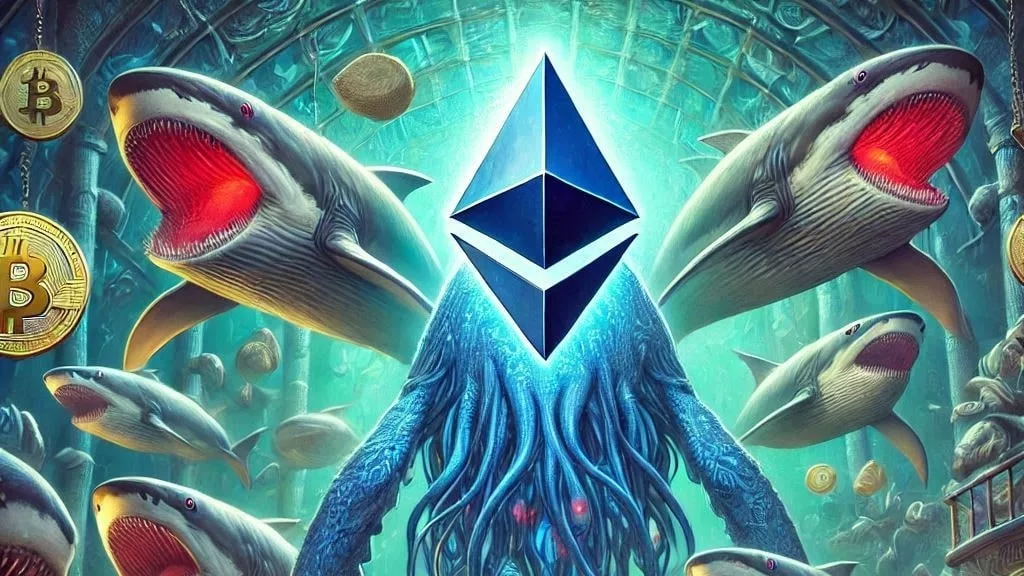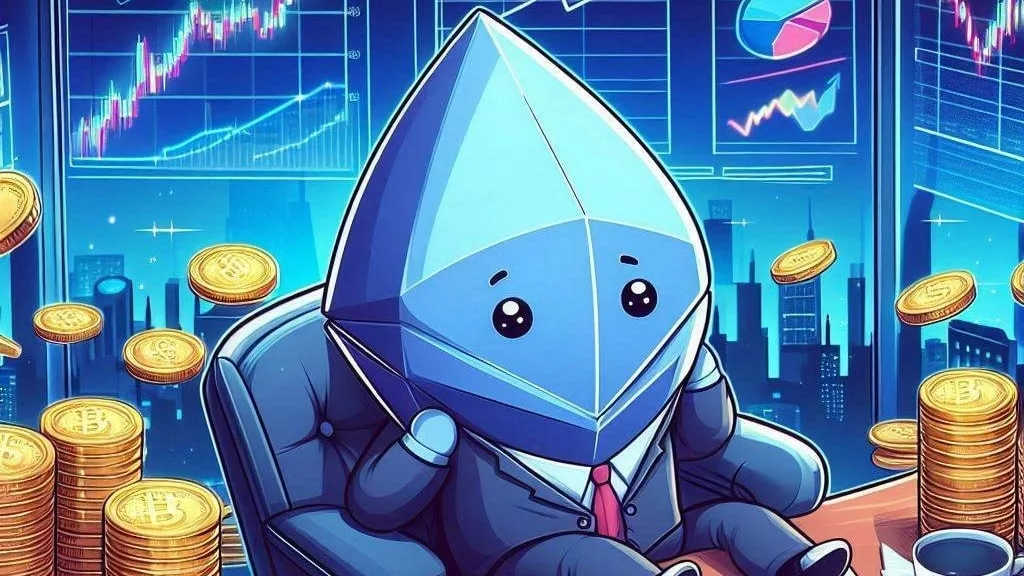Ethereum Faces Whale Sell-Offs and Retail Buying Surge
February 10, 2025
Ethereum Faces Whale Sell-Offs and Retail Buying Surge
Home Altcoins News Ethereum Faces Whale Sell-Offs and Retail Buying Surge
Ethereum Faces Whale Sell-Offs and Retail Buying Surge
Sakamoto Nashi
February 10, 2025

Ethereum (ETH) is facing a critical moment in its market, with two opposing forces in play: large-scale sell-offs by whales and a significant increase in buying activity from retail investors. Since December 2024, the Ethereum network has seen a shift in market dynamics, with aggressive selling by whales clashing with heightened retail buying interest. This struggle between institutional investors and retail traders could define Ethereum’s price action in the coming weeks.
Whale Sell-Offs: A Threat to Ethereum’s Price
Ethereum has recently witnessed an increase in aggressive sell orders, particularly from large investors or “whales.” These sell-offs are evident in the rise of average market order sizes, suggesting that whales are offloading their holdings, possibly due to profit-taking or risk management. As these large holders reduce their positions, it creates significant downward pressure on the price of Ethereum.
The primary reason behind these whale sell-offs could be a desire to lock in profits from Ethereum’s past price gains. With Ethereum reaching new highs in late 2024, some whales may be looking to take profits, especially considering market uncertainties. These sell-offs have the potential to drive ETH’s price lower, especially when the market is more sensitive to large trades.
Retail Investors: Counteracting the Downward Pressure
On the other side, retail investors have been stepping up their activity in the Ethereum market. Since late 2024, there has been a noticeable increase in aggressive buy orders from smaller traders. This surge in retail buying is driven by FOMO (fear of missing out), as retail investors aim to capitalize on Ethereum’s potential.
While retail buying can help support the price, it faces significant challenges from the ongoing whale sell-offs. The large-scale selling by whales creates a substantial headwind for retail investors, making it difficult for their buying efforts to offset the selling pressure. However, if retail buyers continue to show strong interest in Ethereum, their collective buying power could help counterbalance the downward trend, potentially stabilizing or even lifting the price.
Market Sentiment and Selling Pressure
The Fear and Greed Index and other market indicators show that the overall sentiment is currently more cautious. While the Fear and Greed Index is neutral, signaling neither extreme optimism nor pessimism, the market is still influenced by significant selling pressure from whales. The Cumulative Volume Delta (CVD) chart shows a negative trend, with more selling volume than buying volume, pointing to a market dominated by bearish sentiment in the short term.
However, the presence of retail investors with a slightly bullish outlook may prevent the market from falling further. While the pressure from whale sell-offs is undeniable, the balance of sentiment from smaller traders may help Ethereum avoid a major price collapse, potentially leading to price stabilization.
Trading Volatility and Liquidity Challenges
The bid-ask spread, a metric that highlights the difference between buying and selling prices, has shown fluctuations across various exchanges. Wider spreads often signal increased volatility and lower liquidity, making it more expensive for retail traders to execute orders. This scenario could discourage further retail buying, reinforcing the bearish tendencies caused by whale sell-offs.
Increased volatility is another concern, as it can lead to price swings that confuse market participants. This environment can create opportunities for savvy traders, but it may also induce uncertainty for those less experienced, especially if they are caught in the middle of whale-driven price movements.
Ethereum’s Path Forward: Consolidation or Decline?
Given the current market conditions, Ethereum seems poised for a period of consolidation, where price movements become more stable as both whales and retail investors adjust their strategies. The neutral sentiment reflected in the Fear and Greed Index suggests that traders may adopt a more cautious approach, waiting for clearer market signals before making further decisions.
If retail buying continues to rise and shows strength, Ethereum’s price may stabilize or even see a modest rally. However, if whale sell-offs dominate without enough buying support, Ethereum’s price could face additional downward pressure, potentially leading to further declines.
Conclusion
Ethereum is at a crossroads, where the forces of large-scale whale sell-offs and rising retail buying interest are clashing. The outcome will depend on whether retail buyers can continue to push for higher prices or whether whales’ selling pressure will dominate. With increasing volatility and fluctuating market sentiment, Ethereum’s path forward remains uncertain, but one thing is clear: the battle between whales and retail investors will play a crucial role in shaping ETH’s price in the months ahead.
Post Views: 2
Crypto newsletter
Get the latest Crypto & Blockchain News in your inbox.
Search
RECENT PRESS RELEASES
Related Post





